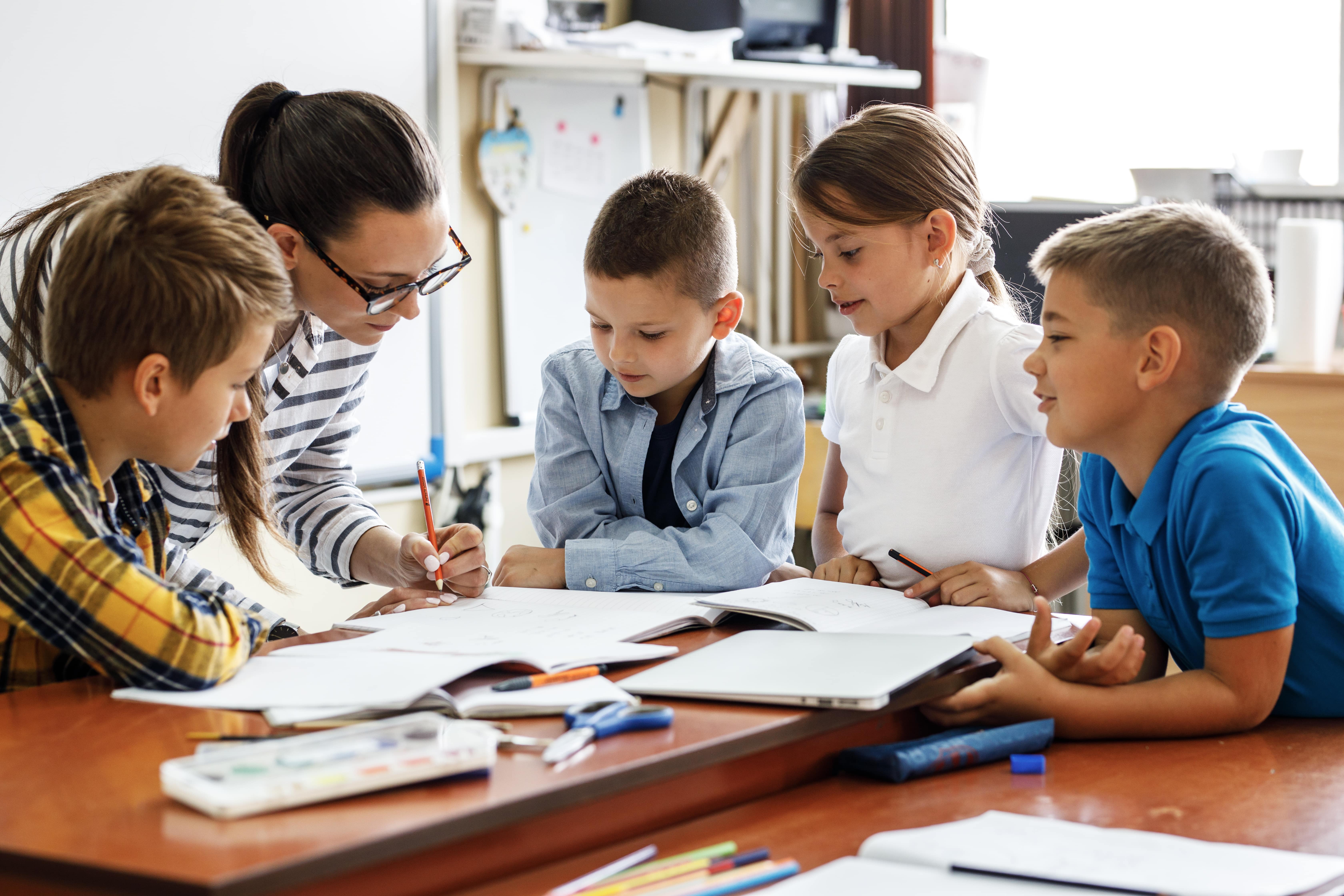Ed Tech Blog

In today's fast-paced and ever-changing world, resilience has become an essential trait, especially for students navigating the complexities of academic life and personal development. Resilience refers to the ability to bounce back from setbacks, adapt to difficult situations, and keep moving forward despite adversity. It's not about avoiding challenges but rather developing the skills and mindset necessary to face and overcome them. For students, resilience is crucial as they encounter academic pressures, social challenges, and life transitions, all of which require mental strength and emotional flexibility. Without resilience, even minor setbacks can feel overwhelming, making it difficult to stay motivated and engaged.
The importance of resilience in education cannot be overstated. In the classroom, students face numerous challenges, from difficult subjects and exams to peer relationships and personal struggles. Resilient students are better equipped to handle these obstacles with a positive outlook, which improves not only their academic performance but also their overall well-being. They develop the ability to cope with stress, manage anxiety, and maintain focus, which are key skills that serve them well throughout their educational journey and beyond. Building resilience also helps students adapt to changes, such as moving to a new school or adjusting to a different learning environment, and fosters a growth mindset that encourages perseverance and a love of learning. Ultimately, resilience empowers students to thrive, even in the face of adversity.
This blog post aims to explore how parents, teachers, and educational institutions can play a critical role in fostering resilience in students. By creating supportive environments, encouraging problem-solving, and teaching coping strategies, we can help young people build the emotional tools they need to succeed academically and personally. From practical strategies in the classroom to the importance of a strong support system at home, we will cover a range of approaches that...
Read more: Empowering the Future: Building Resilience in Students

Introduction
The most important aspect of education is simplicity. In an era where information overload is the norm, educators face the challenge of making complex concepts accessible. When lessons are straightforward and engaging, students not only grasp the material better but also develop a deeper love for learning.
In this blog post, we will explore why simplicity in lesson design is essential for effective teaching. We’ll dive into the cognitive benefits of straightforward instruction, the role of clarity in student engagement, and practical strategies for creating lessons that resonate. Join us as we uncover how embracing simplicity can transform classrooms and empower learners to thrive.
At the heart of effective teaching lies a fundamental principle: cognitive load theory. This concept, developed by psychologist John Sweller, posits that our working memory has limited capacity. When lessons are overloaded with information, students struggle to process and retain what they learn. Simplifying lessons reduces cognitive load, allowing students to focus on key concepts without feeling overwhelmed. By prioritizing essential content, educators can enhance comprehension and foster a deeper understanding of the material.
Moreover, simplifying lessons is particularly beneficial for diverse learners. Students come from various backgrounds and possess differing levels of prior knowledge...
Read more: The Art of Simplicity: Transforming Education Through Clear and Engaging Lessons

In today’s rapidly evolving educational landscape, integrating technology in K-12 classrooms has become essential for enhancing student engagement, fostering collaboration, and personalizing learning experiences. Technology can transform how students learn and how teachers teach, providing tools for critical thinking, creativity, and real-world problem-solving. As schools continue to embrace digital learning, it’s crucial to deploy the right technologies that align with curriculum goals and support diverse student needs. The proper integration of technology not only prepares students for a digital future but also bridges learning gaps, improves access to information, and fosters equity in education.
However, choosing the right technologies for different educational levels is a challenge many schools face. The needs of younger students in elementary schools differ significantly from those of high school students, requiring careful consideration of developmental stages, curriculum objectives, and usability. Additionally, factors like budget constraints, infrastructure readiness, and teacher training also complicate the decision-making process. With the vast array of available tools—ranging from interactive whiteboards to adaptive learning software—it's important to ensure that the chosen technologies genuinely enhance learning rather than add unnecessary complexity to classrooms.
Assessing Educational Needs
To effectively deploy technology in K-12 education, it’s essential to first assess the specific needs of...
Read more: A Strategic Guide to Thoughtful Technology Integration

Introduction
In today’s fast-paced, information-rich world, the ability to conduct effective research has never been more crucial. Whether you’re a student tackling your first research paper, a professional diving into a new project, or simply a lifelong learner exploring a personal interest, strong research skills can empower you to navigate the vast sea of information available at our fingertips. Yet, despite their significance, many individuals struggle with the complexities of research—a challenge that can hinder both academic success and professional growth. In this blog post, we’ll delve into the importance of research skills not only within educational settings but also in the workplace and everyday life. We’ll explore key techniques that can enhance your research abilities, share tips for overcoming common obstacles, and highlight how these skills can be a game-changer in achieving your goals. To illustrate the pressing need for these skills, consider this statistic: a recent survey found that nearly 60% of college students report feeling overwhelmed by the research process, often struggling to evaluate sources and synthesize information effectively. I remember my own early days in university, frantically sifting through articles and books, feeling lost in the sheer volume of material. It was only after I learned...
Read more: Unlocking Potential: The Essential Role of Research Skills in Education and Beyond

In today’s digital age, where the internet is a central part of students' lives, understanding how to stay safe online has never been more important. With the rise of social media, instant messaging, and digital learning tools, students are constantly connected, often without fully understanding the risks. From cyberbullying and identity theft to misinformation and inappropriate content, the online world presents many challenges that young people may not be prepared for. This is where educators play a crucial role. By teaching internet safety, educators can empower students with the knowledge and skills they need to navigate the online world responsibly and safely. As trusted figures in students' lives, teachers are uniquely positioned to foster awareness, guide students on best practices, and help them build a solid foundation for responsible internet use.
Why Internet Safety is Crucial for Students
As technology becomes increasingly integrated into education, students are exposed to the internet more frequently—whether through virtual classrooms, research, or digital collaboration. While this enhances learning opportunities, it also introduces a range of risks. Cyberbullying, where students are harassed or humiliated online, is a growing concern, along with phishing schemes that can trick students into sharing sensitive information. Privacy issues, such as...
Read more: Essential Strategies for Teaching Internet Safety in a Digital Age

Emergent curriculum is a child-centered approach to education that builds on the natural interests, curiosities, and experiences of children to shape the learning environment. Instead of following a fixed, pre-planned syllabus, teachers observe students, recognize patterns in their play and conversations, and then create meaningful learning experiences based on those observations. This dynamic, responsive approach allows the curriculum to evolve organically, adapting to the children's needs and developmental stages. In the early grades, where young learners are most curious and eager to explore, an emergent curriculum lays the foundation for active, engaged learning.
The relevance of an emergent curriculum in early childhood education cannot be overstated. By focusing on what genuinely engages children, it taps into their intrinsic motivation to learn, encouraging creativity, problem-solving, and critical thinking. One of the key benefits is that it makes learning more meaningful and personal, as students are given the opportunity to explore topics that resonate with their interests. Additionally, this approach fosters a strong sense of autonomy, collaboration, and self-confidence in young learners, helping to nurture both their academic skills and social-emotional development. By implementing an emergent curriculum, teachers can create a more inclusive, flexible, and engaging classroom environment that supports holistic growth.
Read more: Unlocking Potential: The Power of Emergent Curriculum in Early Childhood Education
- How to Empower Blind K-12 Students to Excel in Coding: Strategies and Tools for an Inclusive Education
- How to Identify and Support Students in Need of Speech Therapy
- Energizing Science: How Movement Boosts Learning and Engagement in the Classroom
- Empowering Education: Building a Thoughtful Tech-Buying Strategy
